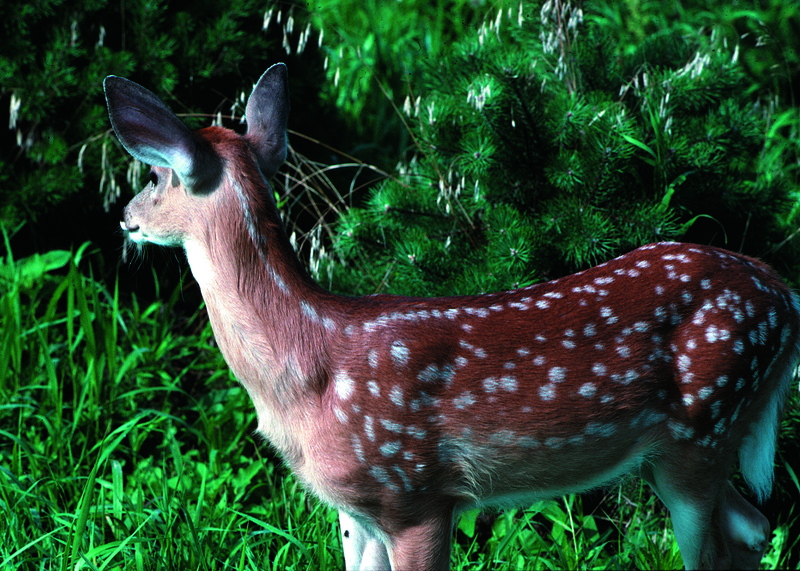In a serendipitous turn of events, the Smithsonian Conservation Biology Institute (SCBI) and partners have discovered a malaria parasite, Plasmodium odocoilei, in up to 25 percent of white-tailed deer along the East Coast of the United States. The results, published Feb. 5 in Science Advances, represent the only native malaria parasite found in mammals in the Americas and the first malaria parasite found in a deer species.

“We were screening mosquitoes at the Smithsonian’s National Zoo for bird malaria parasites when we found a few mosquitoes with parasite DNA sequences unlike any we had seen before,” said Ellen Martinsen, lead author of the paper and an SCBI postdoc. “It took detective work and close collaboration to unravel this mystery that ultimately redefines our understanding of the evolutionary history and distribution of the malaria parasites of mammals.”
Before this study, which was a collaboration with scientists at the American Museum of Natural History, the National Park Service, the University of Georgia, the University of Vermont and the University of Wisconsin-Milwaukee, the malaria parasite had only been documented once in a single deer in Texas in a paper published in 1967 and not seen since then. SCBI researchers not only found that malaria parasites are widespread in white-tailed deer, but also that there are two genetic lineages, probably different species, of malaria parasites. They also found that although the parasites are common across deer populations, they occur in low levels within individuals. It was not until the scientists used sensitive molecular genetics methods that they were able to detect the parasite in the samples.
“People intensively study white-tailed deer and their pathogens, so it was surprising to find two malaria parasites,” said Rob Fleischer, co-author of the paper and head of SCBI’s Center for Conservation and Evolutionary Genetics. “It’s quite surprising to discover something about a species in our backyards, much less so about the rare and endangered species in faraway places. This kind of research is vital to helping us better understand wildlife health threats and potential transmission of pathogens between native wildlife and endangered animals in human care.”
The discovery has led to a host of new questions that the team of researchers hope to answer: What are malaria’s effects on white-tailed deer and do those effects vary based on life stages? Could the parasite infect other hoofed species such as cows on dairy farms or endangered antelopes in human care? (Humans themselves should be safe from infection.) Why is the parasite so common in deer populations throughout the southeastern United States, but exists at such low levels within individual deer? To what extent does malaria affect white-tailed deer in the western part of the United States? The team also aims to confirm that the parasite came over the Bering Land Bridge in the ancestor of the white-tailed deer.
Samples for this study came from necropsied deer in the Pathology Lab at the Smithsonian’s National Zoo and SCBI’s headquarters in Front Royal, Va. Blood samples came from live white-tailed deer in Front Royal. The researchers analyzed the deer samples and mosquitoes collected around the Zoo’s Bird House at SCBI’s Genetics Lab.
“Within SCBI, we could assemble a team of ecologists, geneticists, curators and veterinarians on a single issue,” said Bill McShea, co-author of the paper and SCBI ecologist. “An interesting observation quickly evolved into a detailed study of a common wildlife species using all aspects of the conservation community at SCBI. I was amazed at the quick response of all partners around this single observation.”
See more at Smithsonian National Zoo.

